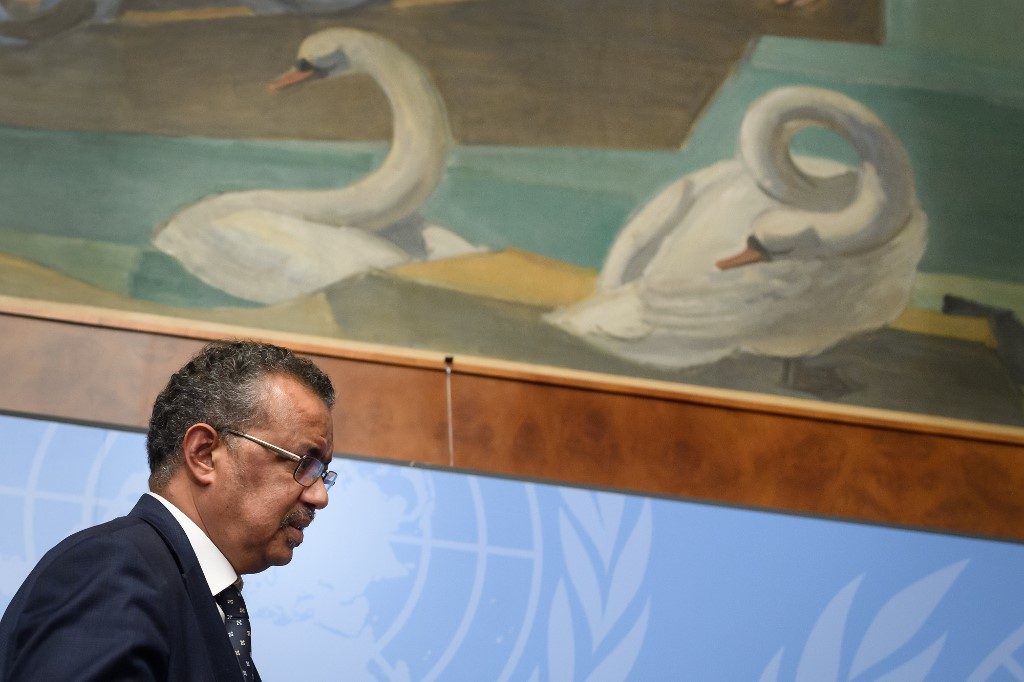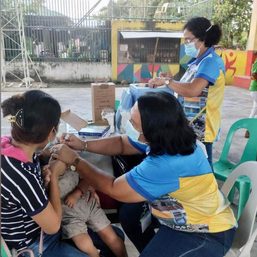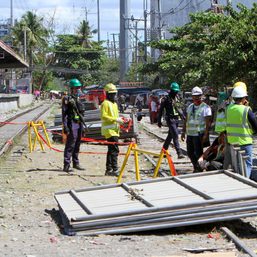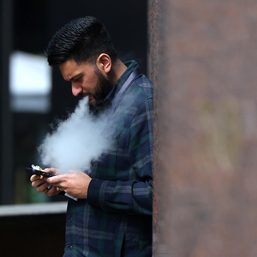SUMMARY
This is AI generated summarization, which may have errors. For context, always refer to the full article.

MANILA, Philippines – World Health Organization (WHO) Director-General Tedros Adhanom Ghebreyesus was in Manila from October 24 to 28 for the 73rd session of the WHO Regional Committee for the Western Pacific, which the Philippine capital hosted.
“Your agenda this week reflects the wide range of challenges you face as a region. I give you my commitment that your WHO will continue to support you, through our country and regional offices, and at headquarters, to promote, provide, protect, power and perform for health,” Tedros said as he addressed health experts from the Asia-Pacific region on October 24.
What was discussed during Tedros’ five-day visit to Manila? Here’s a quick summary:
Pandemic response
Philippine health officer-in-charge Maria Rosario Vergeire told reporters that Tedros recommended to President Ferdinand Marcos Jr. to maintain the state of national calamity status of the country due to the COVID-19 virus.
Tedros made the recommendation to Marcos during his courtesy call to the President on October 25.. Vergeire said that Marcos “understood” the advice and was open to it.
The WHO chief also told Marcos that COVID-19 pandemic is totally different now from what it was in 2020, but the country should strengthen its healthcare system so people could live with the virus, Vergeire said.
The country was first placed under a state of national calamity for six months in March 2020, when infections in the country were growing exponentially. It was then extended twice – first in September 2021 and again in September 2022.
The President then signed Proclamation No. 57, extending the state of national calamity due to the pandemic until December 31, 2022.
State of calamity status is the country’s equivalent to the “public health emergency” declared by the WHO for pandemic response and prevention. It allows the government’s rapid disbursement of funds allotted for emergencies be disbursed rapidly.
Vergeire also shared that WHO members countries agreed to have a treaty on the pandemic, stressing the need for “exchange of information” in dealing with the global health crisis. No further information was disclosed to the media, as the treaty has yet to be finalized.
Primary healthcare
Strengthening primary healthcare was among the agenda discussed during the health conference in Manila. Health experts in the region agreed that ensuring primary healthcare should be the focus of member countries. They stressed that transforming health systems would also mean establishing health services that are tailored to the needs of individuals and rebuilding trust in primary healthcare.
Delegates to the health event endorsed the Regional Framework on the Future of Primary Health Care in the Western Pacific. The framework sets out five strategic actions for governments to consider and adapt to:
- Build appropriate models of service delivery tailored to local contexts.
- Enable individuals and communities to contribute to planning, decision-making, and policy direction.
- Build a diverse primary health-care workforce and provider base that is closely aligned with the needs of communities.
- Redesign and realign health financing to reduce the financial pressure of health care on the population and make health systems financially sustainable in the future.
- Create a supportive and enabling environment to drive and guide action on primary health-care reform.
This framework would be beneficial for the Philippines, as its healthcare system is among the weakest in the region.
A United Nations report in 2020 noted that healthcare systems in the Philippines and Myanmar were “particularly concerning,” as it outlined the impact of COVID-19 on Southeast Asian countries.
The report noted that the Philippines, a nation of 110-million people, has the lowest number of nurses and midwives in Southeast Asia: two for every 10,000 people. (READ: Health care in Philippines, Myanmar ‘concerning’ – UN report)
The WHO said that it would work with member countries to prepare a regional assessment of the performance primary healthcare.
Eliminate cervical cancer
Health experts from the Asia-Pacific endorsed the Strategic Framework for the Comprehensive Prevention and Control of Cervical Cancer in the Western Pacific Region. The member countries have committed to developing policies, implementing programs, and shaping advocacy to eliminate cervical cancer in the region.
The committed to accomplish the following:
- Stepping up vaccination against human papillomavirus (HPV), making vaccines more affordable and accessible, and integrating their delivery into national vaccination programs.
- Increasing screening coverage by strengthening human resources for health and including cervical cancer screening and treatment of precancerous lesions in local, regional and national cancer-control plans.
- Ensuring timely quality treatment by establishing guidelines for the management of all stages of cervical cancer, ensuring access to treatment and providing referral pathways for higher-level care, including setting up subregional hubs.
Most cervical cancer cases are linked to infection with high-risk human HPV. While most HPV infections resolve spontaneously and cause no symptoms, persistent infections can cause cervical cancer in women.
In the Western Pacific, some 145,700 women were diagnosed with cervical cancer in 2020, and 74,900 died from this largely preventable and curable disease, according to the WHO. – Rappler.com
Add a comment
How does this make you feel?

![[Free to Disagree] Sabwatan ng mga doktor at drug companies](https://www.rappler.com/tachyon/2024/04/tl-sabwatan-doktor-drug-companies-April-22-2024.jpg?resize=257%2C257&crop=292px%2C0px%2C720px%2C720px)



There are no comments yet. Add your comment to start the conversation.